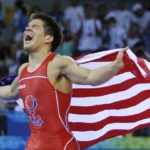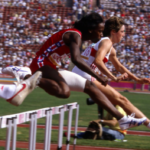Originally Published: on Feb. 3, 2021 | The New York Times | By Motoko Rich, Andrew Keh and Matthew Futterman
No cheering or singing. No handshakes, hugs or high fives. No riding public transportation — not without special permission, at least.
After nearly two months of relative silence amid new waves of coronavirus infection in Japan and many other countries, organizers of this summer’s Tokyo Olympics on Wednesday released the first of several so-called playbooks that will instruct athletes, officials and members of the news media on the protocols they must follow at this summer’s rescheduled Games.
But at only 32 pages, and conspicuously light on details, the document may do little to assuage the concerns of critics who question whether the Olympics can proceed safely amid a pandemic. And the raft of questions left unanswered in its colorfully illustrated pages highlights just how many complicated feats of logistical planning and execution remain ahead for organizers of the world’s largest sporting event.
“If you have been to the Games before, we know this experience will be different in a number of ways,” read the booklet’s introduction. “For all Games participants, there will be some conditions and constraints that will require your flexibility and understanding.”
That might prove a huge understatement. Already delayed once by a year, the opening ceremony is now 170 days away. Between now and then, organizers must find a way to accommodate and ensure the safety of more than 10,000 athletes (as well as thousands of coaches, staff members and journalists) who view this summer as the culmination of years of sacrifice and training. They also must win back the support of an increasingly skeptical Japanese public, all against the fast-changing backdrop of cases, vaccinations and changing global health protocols.
If the Games do open as scheduled on July 23, then the organizers will be right on one point: They will be very different from any previous edition.
For now, the best they could offer were the contours of a plan. Athletes and other attendees will not be required to be vaccinated or to quarantine on arrival in Japan, for example, but they will be subject to severe restrictions on movement and socializing. There will be temperature checks at all venues, and masks must be worn at all times indoors except while eating, drinking or sleeping.
The organizers said the documents were preliminary — the first playbook was heavier on colorful illustrations than hard-and-fast rules — and would be updated as the pandemic evolves. Some of the notes remain hypothetical, too; organizers said Wednesday that they will wait until spring to decide if spectators will be permitted to travel to Tokyo or attend any events.
Anticipating criticism, the International Olympic Committee spent the past week reaching out to stakeholders and lowering expectations for the first iteration of the playbook, fully aware that it was light on substance.
But by beginning to outline the rules for attending the Games, the organizers showed their determination to proceed even as Tokyo remains under a state of emergency and the Japanese public shows strong opposition to hosting the competitions. New and potentially more dangerous variants of the virus are spreading across the globe, and many countries are struggling to vaccinate their populations.
Pierre Ducrey, director of Olympic Games operations for the I.O.C., reiterated on Wednesday that vaccination would not be a prerequisite for athletes or anyone else traveling to Japan for the Games. Japan will not begin its own vaccination campaign until the end of this month, and is unlikely to have its population fully vaccinated before the opening ceremony.
Instead, all athletes will be required to test negative for the coronavirus within 72 hours of their departure for Japan, and submit to another test upon arrival. Assuming their results are still negative, they will then be allowed to participate in training and competition, avoiding the 14-day period of self-isolation that Japan currently requires for all travelers arriving from abroad.
Ducrey said he expected most athletes to stay in the Olympic Village during their time in Tokyo, and that they would be encouraged not to arrive more than five days before their competitions. Athletes most likely will be asked to leave the country within days of finishing competition — a requirement that will further dampen the festive, communal atmosphere that typically develops in the village.
“The regulations are trying to promote the safest possible environment within the village,” Ducrey said.
Christophe Dubi, the I.O.C.’s executive director of the Olympic Games, said he expected most athletes and others to follow the rules, but he declined to speculate on what punishments would be imposed on those who did not.
Organizers expect that some infections will be inevitable, and they said in briefing documents that they would set up special “fever clinics” and secure hospital space for those who get sick.
Little discussed by organizers, though, has been the reality that infections have repeatedly derailed the schedules of other sports competitions around the world, a potentially dire problem at the Olympics, where there is little wiggle room on the calendar.
Michael Toole, an epidemiologist at the Burnet Institute in Melbourne, Australia, offered the hypothetical case of a water polo team. “What if one of those team members tests positive?” he said. “That excludes the team from the competition. And what if they had a heat the previous day with the Canadian team? Probably they would be excluded. This could happen with field hockey, basketball, soccer, rowing. You could end up with this series of events that are suddenly canceled.”
While Wednesday’s playbook was directed at international sports federations, versions that apply more specifically to other groups, including athletes, officials, and the news media and broadcasters, will be released in the coming days. They are expected to include many of the same requirements.
Though it is expected that all visitors coming to Japan for the Games will be exempted from quarantine, they will have to limit their movements for the first 14 days. Travel on public transportation will be prohibited. So will visits to bars, restaurants, health clubs or any other tourist locations.
The Japanese authorities will have the right to send anyone who tests positive for the coronavirus to a government-controlled isolation facility and will determine when they are released.
To track outbreaks, visitors from abroad will have to file a list of everyone they have close contact with during that initial 14-day period. They will be asked to keep one meter away from other visitors — and two meters away from athletes — whenever possible. If fans are eventually allowed to attend, the documents suggest they be asked to express support for athletes only in the form of clapping, rather than singing or chanting.
Olympic officials see some reason for optimism. In many parts of the world, professional sporting events have been held for months, though often with sparse crowds or no spectators at all, and nothing as large as the Summer Games. In Japan, soccer and baseball games have been staged with up to 5,000 spectators.
Some of the stiffest opposition to holding the Games comes from the Japanese public. In a survey conducted in January, the Japanese broadcaster NHK found that nearly 80 percent of respondents believed the Games should be postponed again or canceled entirely, a figure that has grown in recent months.
Mei Ichinose, 23, a Paralympic swimmer who expects to compete for Japan, said in an interview last month that the health of everyday citizens needs to come first. “Daily lives should be prioritized,” said Ichinose, who is training near Brisbane, Australia, “and when that’s not safe or when that is not protected, I don’t think sports should really be pushed in front.”
Cancellation would come at a huge cost for Japan, which has spent more than $12 billion preparing for the Summer Games. The I.O.C., international sports federations and national Olympic committees also stand to lose billions in media and sponsorship revenue — money that, in some cases, provides the bulk of their funding — if they are canceled.
In their effort to keep the Games alive, Olympic officials have been consulting with Tennis Australia, the organizer of the Australian Open, which spent millions of dollars flying more than 1,200 athletes and other personnel into the country two weeks before the tournament so they could undergo some form of quarantine.
Crag Tiley, the chief executive of Tennis Australia, said the tournament’s protocols were not scalable to an event the size of the Olympic Games.
“I’ve had a lot of contact from the Olympics in Tokyo,” Tiley said during a teleconference ahead of the Open. “They asked me if I had any advice. I just said, ‘Good luck.’”
By Wednesday, Tiley had his own new problem with the virus: A worker at one of the tournament’s quarantine hotels had tested positive, tournament officials announced, meaning hundreds of players, coaches and other guests would have to be isolated until they could be tested.







